
Enterprise‑Ready AI Agents: What CTOs Need to Know Before Scaling
Last updated: October 28, 2025 Read in fullscreen view
- 10 Apr 2022
 Agile self-organizing teams: What are they? How do they work? 28/435
Agile self-organizing teams: What are they? How do they work? 28/435 - 25 Nov 2025
 How AI Agents Are Redefining Enterprise Automation and Decision-Making 27/42
How AI Agents Are Redefining Enterprise Automation and Decision-Making 27/42 - 21 May 2022
 "Fail Fast, Fail Often, Fail Forward" is the answer to Agile practices of software success 18/941
"Fail Fast, Fail Often, Fail Forward" is the answer to Agile practices of software success 18/941 - 01 Jul 2025
 The Hidden Costs of Not Adopting AI Agents: Risk of Falling Behind 17/108
The Hidden Costs of Not Adopting AI Agents: Risk of Falling Behind 17/108 - 07 Nov 2025
 Online vs. Offline Machine Learning Courses in South Africa: Which One Should You Pick? 16/30
Online vs. Offline Machine Learning Courses in South Africa: Which One Should You Pick? 16/30 - 21 Nov 2025
 The Rise of AgentOps: How Enterprises Are Managing and Scaling AI Agents 12/43
The Rise of AgentOps: How Enterprises Are Managing and Scaling AI Agents 12/43 - 06 Nov 2025
 Top 10 AI Development Companies in the USA to Watch in 2026 10/36
Top 10 AI Development Companies in the USA to Watch in 2026 10/36 - 12 Oct 2022
 14 Common Reasons Software Projects Fail (And How To Avoid Them) 10/504
14 Common Reasons Software Projects Fail (And How To Avoid Them) 10/504 - 28 Jul 2025
 Data Modernization for SMBs: Small Steps, Big Impact 9/115
Data Modernization for SMBs: Small Steps, Big Impact 9/115 - 13 Oct 2021
 Outsourcing Software Development: MVP, Proof of Concept (POC) and Prototyping. Which is better? 6/424
Outsourcing Software Development: MVP, Proof of Concept (POC) and Prototyping. Which is better? 6/424 - 20 Jan 2022
 TIGO Self-Organization Practice: Change Management Workflow 6/430
TIGO Self-Organization Practice: Change Management Workflow 6/430 - 28 Jul 2022
 POC, Prototypes, Pilots and MVP: What Are the Differences? 6/606
POC, Prototypes, Pilots and MVP: What Are the Differences? 6/606 - 20 Nov 2022
 Agile working method in software and football 5/323
Agile working method in software and football 5/323 - 31 Aug 2022
 What are the best practices for software contract negotiations? 5/215
What are the best practices for software contract negotiations? 5/215 - 16 Jun 2022
 Rapid Application Development (RAD): Pros and Cons 5/800
Rapid Application Development (RAD): Pros and Cons 5/800 - 05 Mar 2021
 How do you minimize risks when you outsource software development? 5/317
How do you minimize risks when you outsource software development? 5/317 - 07 Oct 2025
 Case Study: Using the “Messaging House” Framework to Build a Digital Transformation Roadmap 5/45
Case Study: Using the “Messaging House” Framework to Build a Digital Transformation Roadmap 5/45 - 24 Dec 2024
 Artificial Intelligence and Cybersecurity: Building Trust in EFL Tutoring 5/144
Artificial Intelligence and Cybersecurity: Building Trust in EFL Tutoring 5/144 - 01 Jan 2024
 The pros and cons of the Centralized Enterprise Automation Operating model 4/165
The pros and cons of the Centralized Enterprise Automation Operating model 4/165 - 12 Dec 2021
 Zero Sum Games Agile vs. Waterfall Project Management Methods 4/374
Zero Sum Games Agile vs. Waterfall Project Management Methods 4/374 - 04 Oct 2022
 Which ERP implementation strategy is right for your business? 4/278
Which ERP implementation strategy is right for your business? 4/278 - 28 Nov 2025
 How AI Will Transform Vendor Onboarding and Seller Management in 2026 4/21
How AI Will Transform Vendor Onboarding and Seller Management in 2026 4/21 - 18 Jul 2021
 How To Ramp Up An Offshore Software Development Team Quickly 3/516
How To Ramp Up An Offshore Software Development Team Quickly 3/516 - 20 Jan 2021
 Fail early, fail often, fail cheap, fail safe but always fail forward 3/688
Fail early, fail often, fail cheap, fail safe but always fail forward 3/688 - 01 Dec 2023
 Laws of Project Management 3/249
Laws of Project Management 3/249 - 09 Jul 2024
 What Is Artificial Intelligence and How Is It Used Today? 3/216
What Is Artificial Intelligence and How Is It Used Today? 3/216 - 05 Sep 2023
 The Cold Start Problem: How to Start and Scale Network Effects 3/167
The Cold Start Problem: How to Start and Scale Network Effects 3/167 - 22 May 2025
 Role of Self-Service in CRM: Customer & Partner Portals for Automation 3/72
Role of Self-Service in CRM: Customer & Partner Portals for Automation 3/72 - 05 Jun 2025
 How AI-Driven Computer Vision Is Changing the Face of Retail Analytics 2/77
How AI-Driven Computer Vision Is Changing the Face of Retail Analytics 2/77 - 17 Oct 2025
 MLOps vs AIOps: What’s the Difference and Why It Matters 2/67
MLOps vs AIOps: What’s the Difference and Why It Matters 2/67 - 03 Jul 2022
 Manifesto for Agile Software Development 2/240
Manifesto for Agile Software Development 2/240 - 02 Dec 2022
 Success Story: Satsuki - Sales Management Software, back office app for School Subscription Management 2/219
Success Story: Satsuki - Sales Management Software, back office app for School Subscription Management 2/219 - 17 Mar 2025
 Integrating Salesforce with Yardi: A Guide to Achieving Success in Real Estate Business 2/141
Integrating Salesforce with Yardi: A Guide to Achieving Success in Real Estate Business 2/141 - 21 Apr 2025
 Agent AI in Multimodal Interaction: Transforming Human-Computer Engagement 2/148
Agent AI in Multimodal Interaction: Transforming Human-Computer Engagement 2/148 - 04 Oct 2023
 The Future of Work: Harnessing AI Solutions for Business Growth 2/258
The Future of Work: Harnessing AI Solutions for Business Growth 2/258 - 01 May 2024
 Warren Buffett’s Golden Rule for Digital Transformation: Avoiding Tech Overload 2/188
Warren Buffett’s Golden Rule for Digital Transformation: Avoiding Tech Overload 2/188 - 21 Aug 2024
 What is Singularity and Its Impact on Businesses? 2/324
What is Singularity and Its Impact on Businesses? 2/324 - 11 Nov 2021
 What is an IT Self-service Portal? Why is it Important to Your Business? 2/364
What is an IT Self-service Portal? Why is it Important to Your Business? 2/364 - 04 Oct 2021
 Product Validation: The Key to Developing the Best Product Possible 2/295
Product Validation: The Key to Developing the Best Product Possible 2/295 - 12 Oct 2020
 The Agile Manifesto - Principle #8 2/447
The Agile Manifesto - Principle #8 2/447 - 07 Oct 2020
 How To Manage Expectations at Work (and Why It's Important) 2/266
How To Manage Expectations at Work (and Why It's Important) 2/266 - 02 Nov 2021
 [Case Study] Streamlined Data Reporting using Tableau 2/276
[Case Study] Streamlined Data Reporting using Tableau 2/276 - 08 Aug 2022
 Difference between Power BI and Datazen 2/297
Difference between Power BI and Datazen 2/297 - 28 Oct 2022
 Build Operate Transfer (B.O.T) Model in Software Outsourcing 2/361
Build Operate Transfer (B.O.T) Model in Software Outsourcing 2/361 - 03 Apr 2021
 How digital asset management streamlines your content workflow? 1/312
How digital asset management streamlines your content workflow? 1/312 - 13 Feb 2021
 Why is TIGOSOFT a software house for Enterprise Application Development? 1/336
Why is TIGOSOFT a software house for Enterprise Application Development? 1/336 - 29 Oct 2024
 Top AI Tools and Frameworks You’ll Master in an Artificial Intelligence Course 1/328
Top AI Tools and Frameworks You’ll Master in an Artificial Intelligence Course 1/328 - 06 May 2025
 How Machine Learning Is Transforming Data Analytics Workflows 1/148
How Machine Learning Is Transforming Data Analytics Workflows 1/148 - 05 Aug 2024
 Affordable Tech: How Chatbots Enhance Value in Healthcare Software 1/142
Affordable Tech: How Chatbots Enhance Value in Healthcare Software 1/142 - 12 Aug 2024
 Understanding Google Analytics in Mumbai: A Beginner's Guide 1/84
Understanding Google Analytics in Mumbai: A Beginner's Guide 1/84 - 24 Oct 2025
 AI Agents in SaaS Platforms: Automating User Support and Onboarding 1/52
AI Agents in SaaS Platforms: Automating User Support and Onboarding 1/52 - 06 Nov 2025
 DataOps: The Next Frontier in Agile Data Management 1/34
DataOps: The Next Frontier in Agile Data Management 1/34 - 16 Sep 2022
 Examples Of Augmented Intelligence In Today’s Workplaces Shaping the Business as Usual 1/394
Examples Of Augmented Intelligence In Today’s Workplaces Shaping the Business as Usual 1/394 - 01 Dec 2025
 Manufacturing 4.0: AI Agents Enabling Self-Optimizing Production Systems /
Manufacturing 4.0: AI Agents Enabling Self-Optimizing Production Systems / - 10 Nov 2025
 Multi-Modal AI Agents: Merging Voice, Text, and Vision for Better CX /33
Multi-Modal AI Agents: Merging Voice, Text, and Vision for Better CX /33 - 09 Sep 2025
 Aligning BI Dashboards with KPIs: A Business + Data Collaboration Guide /50
Aligning BI Dashboards with KPIs: A Business + Data Collaboration Guide /50 - 06 Mar 2024
 [SemRush] What Are LSI Keywords & Why They Don‘t Matter /131
[SemRush] What Are LSI Keywords & Why They Don‘t Matter /131 - 31 Jul 2025
 Top WooCommerce Pre-Order Plugins with Countdown & Discounts /70
Top WooCommerce Pre-Order Plugins with Countdown & Discounts /70 - 27 Aug 2025
 How AI Consulting Is Driving Smarter Diagnostics and Hospital Operations /66
How AI Consulting Is Driving Smarter Diagnostics and Hospital Operations /66 - 15 Aug 2025
 Quantum Technology: Global Challenges and Opportunities for Innovators /56
Quantum Technology: Global Challenges and Opportunities for Innovators /56 - 29 Aug 2025
 How AI Is Transforming Modern Management Science /33
How AI Is Transforming Modern Management Science /33 - 22 Sep 2025
 Why AI Is Critical for Accelerating Drug Discovery in Pharma /53
Why AI Is Critical for Accelerating Drug Discovery in Pharma /53 - 15 Apr 2024
 Weights & Biases: The AI Developer Platform /170
Weights & Biases: The AI Developer Platform /170 - 01 Dec 2022
 Difference between Set-based development and Point-based development /298
Difference between Set-based development and Point-based development /298 - 21 Jun 2021
 6 Useful Tips To Streamline Business Processes and Workflows /515
6 Useful Tips To Streamline Business Processes and Workflows /515 - 19 Oct 2021
 Software development life cycles /628
Software development life cycles /628 - 27 Oct 2020
 8 principles of Agile Testing /1196
8 principles of Agile Testing /1196 - 09 Oct 2022
 Key Advantages and Disadvantages of Agile Methodology /666
Key Advantages and Disadvantages of Agile Methodology /666 - 10 Oct 2022
 Should Your Business Go Agile? (Infographic) /108
Should Your Business Go Agile? (Infographic) /108 - 21 Oct 2022
 Virtual meeting - How does TIGO save cost, reduce complexity and improve quality by remote communication? /166
Virtual meeting - How does TIGO save cost, reduce complexity and improve quality by remote communication? /166 - 02 Nov 2022
 Frequently Asked Questions about Agile and Scrum /372
Frequently Asked Questions about Agile and Scrum /372 - 03 Sep 2022
 The secret of software success: Simplicity is the ultimate sophistication /186
The secret of software success: Simplicity is the ultimate sophistication /186 - 16 Jul 2022
 What are disadvantages of Agile Methodology? How to mitigate the disadvantages ? /353
What are disadvantages of Agile Methodology? How to mitigate the disadvantages ? /353 - 01 Jun 2022
 How Your Agile Development Team is Just Like a Football Team? /206
How Your Agile Development Team is Just Like a Football Team? /206 - 28 Nov 2023
 Scrum Team Failure — Scrum Anti-Patterns Taxonomy (3) /228
Scrum Team Failure — Scrum Anti-Patterns Taxonomy (3) /228 - 01 Mar 2022
 Why Does Scrum Fail in Large Companies? /243
Why Does Scrum Fail in Large Companies? /243 - 06 Nov 2023
 How do you streamline requirement analysis and modeling? /184
How do you streamline requirement analysis and modeling? /184
| About the Author | Anand Subramanian | Technology expert and AI enthusiast |
Anand Subramanian is a technology expert and AI enthusiast currently leading the marketing function at Intellectyx, a Data, Digital, and AI solutions provider with over a decade of experience working with enterprises and government departments. |
Artificial intelligence agents are no longer confined to lab demos or experimental pilots. They’re becoming operational workhorses inside large organizations. From autonomous customer support to supply chain optimization, enterprise AI agents are increasingly handling complex workflows once owned exclusively by humans.
For CTOs, the conversation has shifted. It’s no longer about if you should explore AI agents, but how to scale them without compromising reliability, governance, and ROI. Scaling prematurely or without the right safeguards can turn a promising AI initiative into a costly liability.
This guide unpacks what CTOs must know before taking enterprise AI agents from pilot to full scale deployment.
Why Enterprise AI Agents Are Different from Chatbots or Simple Automation
A common misconception is equating enterprise AI agents with the chatbots of 2017. While both can interact with users, enterprise AI agents operate with far more autonomy, context awareness, and multi system orchestration capabilities.
Instead of executing single, scripted tasks, enterprise ready agents can:
- Pull and synthesize data from multiple enterprise systems (ERP, CRM, SCM).
- Make contextual decisions based on policies, priorities, and historical patterns.
- Collaborate with other agents or humans via APIs, messaging platforms, and even voice.
- Continuously learn from outcomes to improve performance over time.
Think of them as digital colleagues that understand business logic, compliance rules, and domain specific workflows, not just “smart assistants.”
The Scaling Temptation and Its Risks
When a proof of concept AI agent delivers quick wins, say, cutting call handling times by 40%, it’s tempting to fast track it across the enterprise. But scaling AI agents isn’t just about deploying more instances. It requires rethinking infrastructure, governance, and human in the loop processes.
Common risks when scaling too soon include:
- Model Drift – AI agents that perform well in controlled settings may degrade when exposed to broader, noisier enterprise data.
- Integration Fragility – Relying on brittle connectors between systems can lead to cascading failures in automated workflows.
- Shadow AI – Teams creating unauthorized agents outside governance policies, risking security breaches and compliance violations.
- Cost Overruns – Inference costs (especially with LLM powered agents) can spiral when usage scales without optimization.
Four Pillars of Enterprise Ready AI Agents
1. Enterprise Data Readiness
An AI agent is only as good as the data it consumes. Before scaling, assess:
- Data Quality – Are your ERP, CRM, and operational systems free from major inconsistencies? Garbage in, garbage out applies exponentially to autonomous agents.
- Real Time Access – Can your agents query up to the minute data without bottlenecks? Delayed or stale inputs can cause costly errors.
- Security & Compliance – Ensure data pipelines adhere to HIPAA, GDPR, SOC 2, or relevant frameworks before agents start processing sensitive information.
2. Operational Governance
Scaling AI agents without strong governance is like adding drivers to a fleet without traffic laws.
Key governance steps include:
- Agent Identity Management – Each AI agent should have a unique identity, access role, and audit trail in your IAM system.
- Policy Driven Decision Boundaries – Define which actions agents can take autonomously vs. when they must escalate to humans.
- Auditability & Explainability – Ensure logs, decision trees, and LLM prompts are stored for post event analysis.
3. Human in the Loop (HITL) Frameworks
Even the best enterprise AI agents will encounter edge cases they can’t resolve confidently. Without a HITL mechanism, these become silent failures.
HITL strategies for scale:
- Confidence Thresholds – If confidence < 85%, escalate to a human operator.
- Feedback Loops – Capture human interventions as training data to improve future performance.
- Role Based Review – Route escalations to the right SME (subject matter expert) to avoid bottlenecks.
4. Performance and Cost Optimization
An agent that costs more to run than the value it generates is a scaling failure.
CTOs should monitor:
- Latency – Agents must respond quickly, even as workloads grow.
- Inference Cost per Transaction – Track and optimize token usage in LLM based agents.
- Utilization Metrics – Ensure agents are being invoked for the right tasks, not overused for low value interactions.
Scaling Strategy: From Pilot to Enterprise Deployment
A robust scaling plan for enterprise AI agents should move through four maturity stages:
| Stage | Objective | CTO’s Priority |
|---|---|---|
| Pilot | Validate use case in a controlled environment | Risk containment & rapid iteration |
| Limited Rollout | Deploy to select teams or regions | Monitor KPIs & refine governance |
| Scaled Operations | Enterprise wide adoption | Optimize performance & costs |
| Continuous Evolution | Agents self improve & adapt to new business needs | Strategic expansion to new domains |
This staged approach avoids the “big bang” risk and gives teams time to adapt culturally and operationally.
Cultural & Organizational Readiness
Scaling enterprise AI agents isn’t purely a technical endeavor, it’s a cultural shift. CTOs must prepare for:
- Skill Gaps – Upskill teams on prompt engineering, AI monitoring, and ethical AI practices.
- Change Resistance – Address fears of job displacement by positioning agents as collaborators, not replacements.
- Cross Functional Ownership – Involve legal, compliance, and business units early in scaling discussions.
Red Flags Before Scaling Enterprise AI Agents
Before you green light a large rollout, pause if you see:
- KPIs from the pilot phase plateauing or dropping.
- Unclear ownership of agent maintenance and retraining.
- Lack of a disaster recovery or rollback plan for agent driven workflows.
- Security penetration tests revealing exploitable vulnerabilities in agent integrations.
Looking Ahead: Autonomous Ecosystems
The future isn’t just about standalone AI agents, it’s about agent ecosystems that collaborate across domains. Imagine a customer support agent that talks to a supply chain agent to confirm stock availability, which then alerts a procurement agent to reorder without human intervention.
For CTOs, preparing for this interconnected future means:
- Building interoperability standards now.
- Designing agents that can share context across functions securely.
- Anticipating governance at the ecosystem level, not just the individual agent level.
Final Thoughts for CTOs
Enterprise AI agents promise transformative gains in efficiency, decision making, and customer experience, but only if they’re scaled with rigor, governance, and a focus on measurable outcomes.
Before scaling, ask yourself:
- Are our data pipelines, governance, and HITL frameworks enterprise grade?
- Do we have clear KPIs tied to agent performance and ROI?
- Is our organization culturally ready to collaborate with AI agents?
Scaling isn’t a race, it’s a discipline. The CTOs who treat enterprise AI agents as long term strategic assets, not quick wins, will be the ones who turn them into competitive advantages.
Anand Subramanian
Technology expert and AI enthusiast
Anand Subramanian is a technology expert and AI enthusiast currently leading the marketing function at Intellectyx, a Data, Digital, and AI solutions provider with over a decade of experience working with enterprises and government departments.





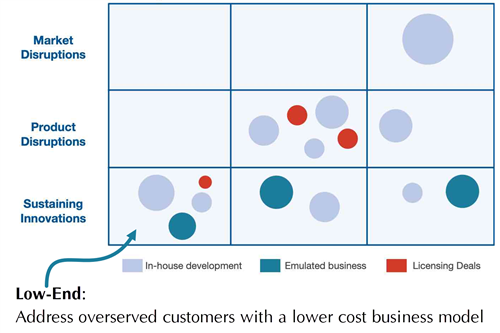

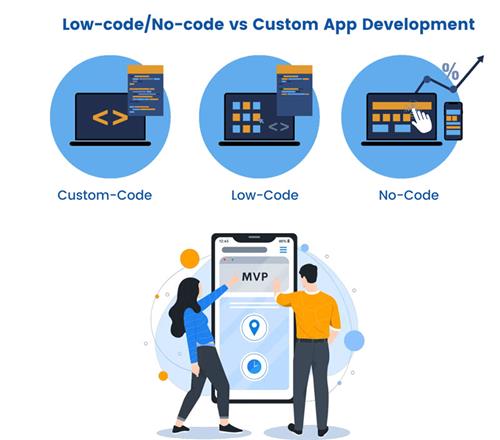



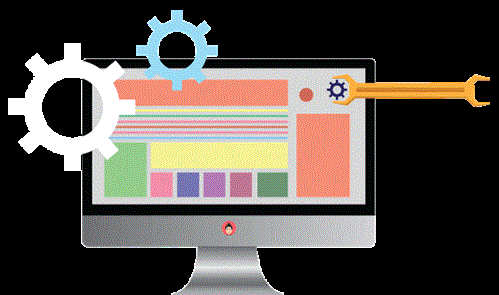



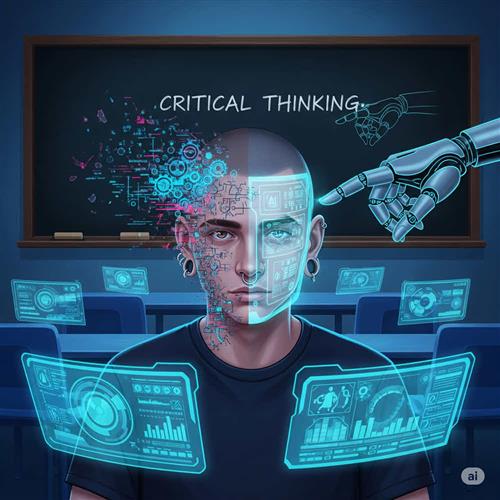


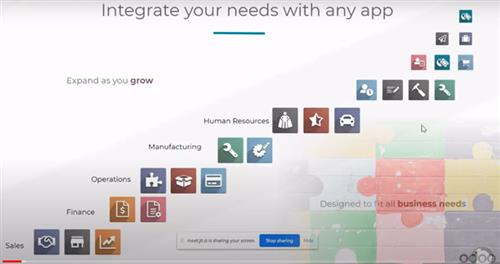


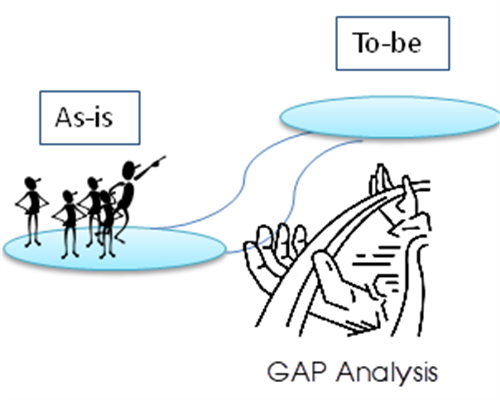
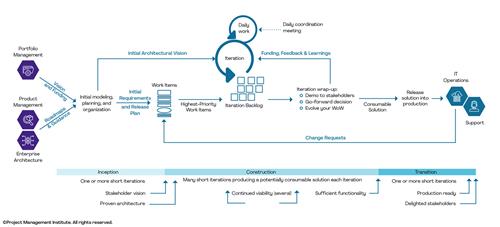
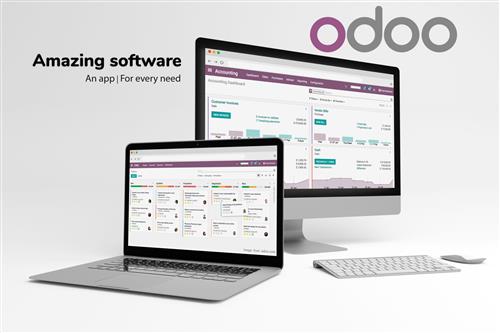









 Link copied!
Link copied!
 Recently Updated News
Recently Updated News